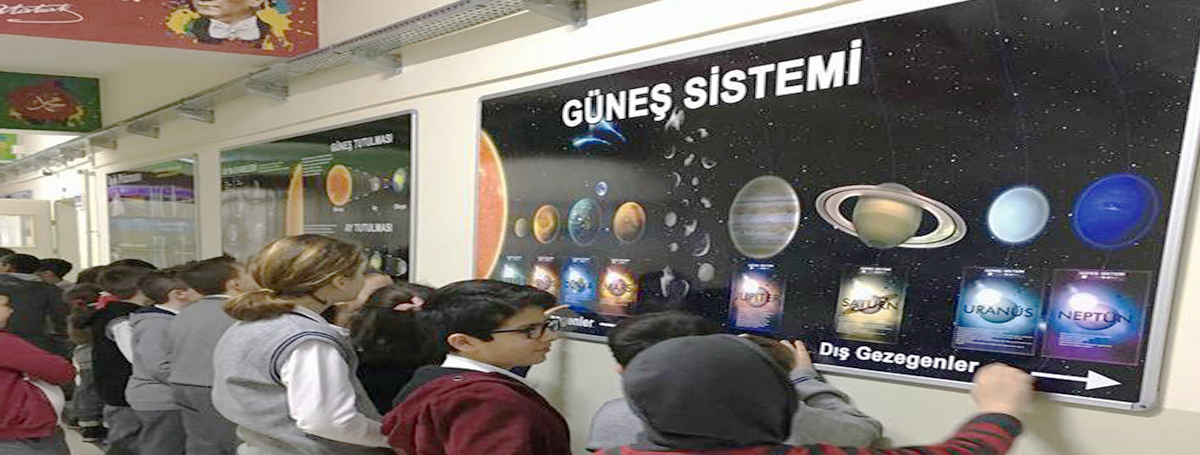
Throughout the Ottoman Empire, a key goal of education was to raise 'good Muslims'. Hence there was a need for Islamic scholars, which was sustained through Islamic Theology Schools, called Madrasa.In 1913, the Medresetü-l Eimmeti vel Hutaba (School of ministers and preachers Medresetü-l Vaazin were integrated to form the concrete origins of today's Imam Hatip high schools
In 1924, the Tevhid-i Tedrisat (Law of Unification of Educational Direction was passed, changing the existing, primarily sectarian educational system with a secular, centralist and nationalist education one. The new law brought all universities under the control of the Ministry of National Education. A Professors of Faith at the Darülfünun (Istanbul University), unique schools for training imams and hatips (ministers and preachers) were opened by the brand-new Ministry of National Education. However, in 1930 İmam Hatip schools were closed and 1933 the Faculty of Divinity was abolished.
In contrast to the exclusively secularist nature of the education policy of the Republican People's Party (CHP) religious education was reinstated in 1948. This included the establishment of a Faculty of Theology at the University of Ankara in 1949. Initial steps for the facility of Imam Hatip schools started in 1951 under the Democrat Celebration federal government, which established 7 unique secondary schools (Imam Hatip Okulları). In addition, in 1959 Islamic Institutes were opened for graduates of Imam Hatip schools.
Following the coup d'etat in 1960, Imam Hatip schools came across the hazard of closure. Following the return to civilian politics and the introduction of the new constitution in 1961, graduates of Imam Hatip schools could only register in university programs if they had actually passed courses used at secular schools. During the premiership of Süleyman Demirel however, graduates of Imam Hatip schools were admitted to university without such requirements. The 1971 Turkish coup d'état presented 2 essential reforms: firstly junior high Imam Hatip schools were abolished, and in 1973 Imam Hatip schools were renamed as Imam Hatip high schools. Under the subsequent National Education Basic Law, Imam Hatip schools were specified as professional schools, where students were to be trained as preachers and ministers or prepared for college.
Imam Hatip schools grew gradually initially, but their numbers broadened rapidly to 334 throughout the 1970s. The coalition federal government of 1974, established by the CHP and the MSP (National Salvation Celebration), dedicated to resume junior highs and providing the right of entry to university through examination. 230 brand-new Imam Hatip high schools were opened in a period of almost four years. Throughout the 1974-75 school year the variety of trainees attending to the Imam Hatip high schools grew to 48,895. This number consequently grew to 200,300 by 1980-81. In addition, females got the right of entry to Imam Hatip high schools in 1976. The proliferation of Imam Hatip high schools is often mentioned as the effect of the National Redemption Party's subscription of a number of unions with Nationalist Front governments.
Circumstance since 1980
The coup d'etat of September 12, 1980 is an important turning point in the history of Turkey and also for the history of İmam-Hatip high schools. Under military governance, graduates of Imam Hatip high schools acquired the right of entry to all university departments. In 1985, two new Imam Hatip high schools opened, one in Tunceli, despite of the so-called ethnic structure of the area, and the other in Beykoz as an Anatolian Imam imam hatip kapı giydirme Hatip High School, with the aim of adding to the education of kids of families who work abroad. Although the variety of Imam Hatip high schools had not increased given that, the variety of trainees going to Imam Hatip high schools has actually increased by 45%. This is partly due to the improvement in the quality of Imam Hatip high schools and the education used at such schools.
During the education year of 1973-74, the overall variety of Imam Hatip students was 34,570; in 1997 this number had dramatically increased to reach 511,502. Along with this massive increase in appeal, the variety of schools likewise increased. The number of Imam Hatip junior high schools reached 601 and secondary schools 402. The boost in both trainee and school numbers can be associated to aspects including the dedication of individuals to religion, dorm centers, scholarships, the admittance of women and a boost in need for spiritual education.
Research study suggests that between the years of 1993 and 2000, prospective students registered at Imam Hatip high schools mostly to receive spiritual tutoring along with a more basic education.In addition, research study reveals enrolment at Imam Hatip high schools was based exclusively on the trainee's choice. The 3rd suggested aspect in the increase in appeal of Imam Hatip schools is the admission of female trainees in 1976. By 1998, nearly 100,000 women went to Imam Hatip high schools, comprising practically half of all students. This fact is particularly revealing because women are not qualified to end up being either priests or ministers.
Nevertheless, the introduction of eight years of mandatory education in 1997 has seen a sudden decrease in the appeal of Imam Hatip schools. In 1999, the reclassification of Imam Hatip schools as "professional schools" suggested that, although more choices had been made available to graduates, attaining locations at distinguished university courses became more difficult.By requiring that all 8 obligatory years of schooling be spent under the very same primary-school roofing, intermediate schools were abolished. Kids might not get in professional schools (one of them the Imam Hatip school) till the ninth grade (rather than the sixth, as prior to).